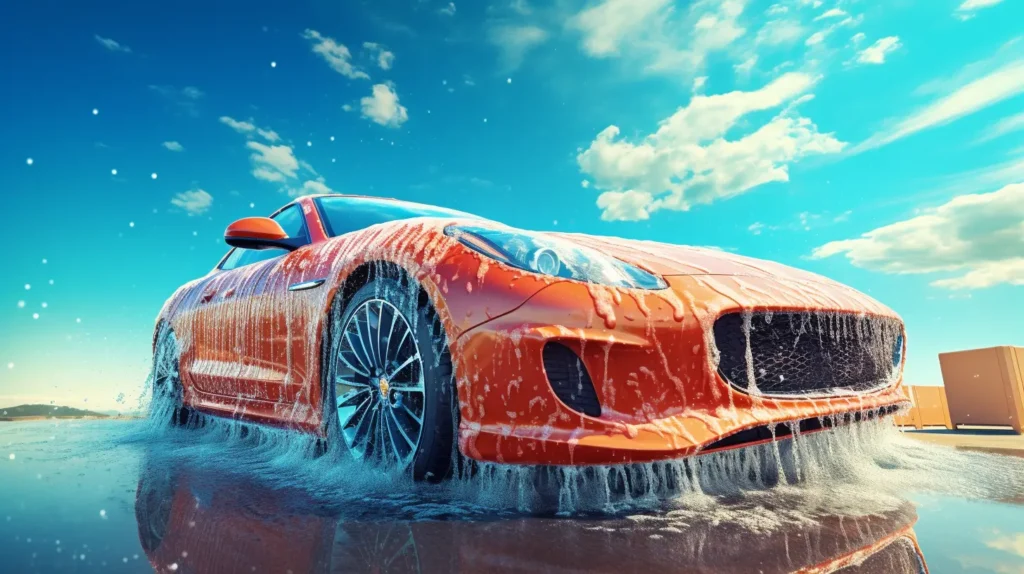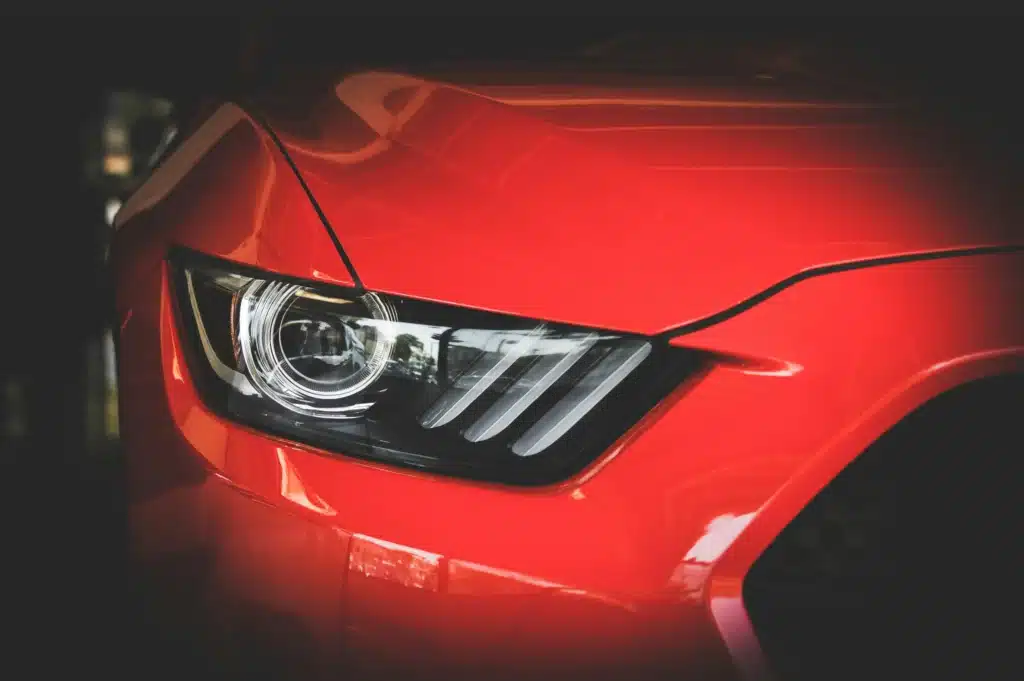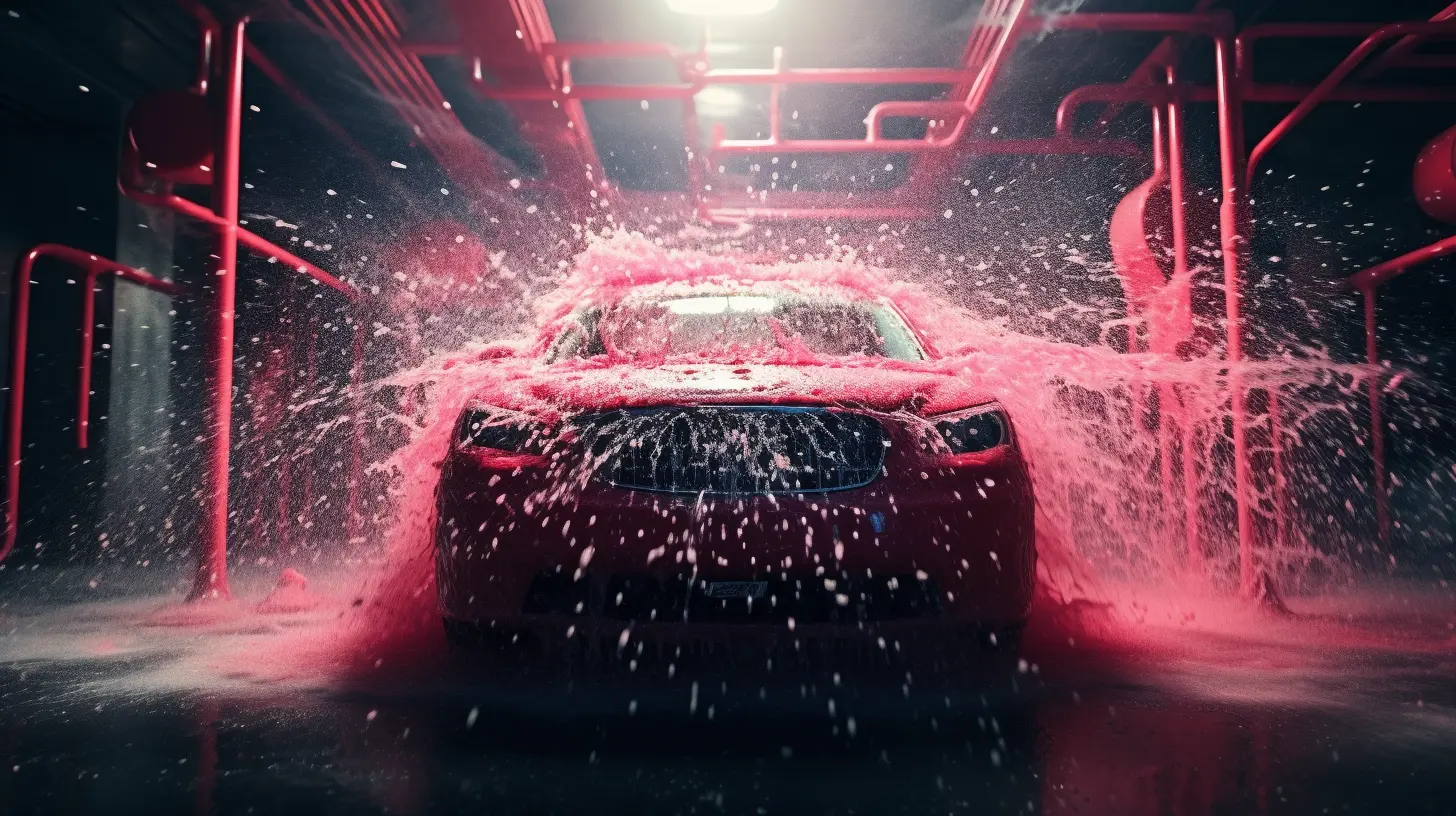Ever wonder what a touchless car wash is?
It’s like magic for your car, cleaning without a single brush or cloth.
Unlike traditional washes that scrub and rub, touchless car washes use powerful sprays and special soaps to do the job. This means no scratches or damage to your car’s paint. Imagine getting your car sparkling clean while you sit back and relax.
It’s quick, and easy, and keeps your ride looking fresh. Dive into the world of touchless car washes and discover why they’re the future of keeping cars shiny without the hassle.
Key Takeaways
- Touchless car washes use high-pressure water and special detergents to clean cars without brushes, which helps avoid scratches.
- They are a quick and convenient option for those who want to maintain their car’s appearance with minimal effort.
- Touchless car washes are gentle on ceramic coatings, making them a good choice for cars with this protective layer.
- While effective, touchless washes may not remove heavy dirt or grime as thoroughly as traditional methods.
- Consider using touchless car washes regularly to keep your car clean without risking damage from brushes.
- As technology advances, expect touchless car washes to become even more efficient and environmentally friendly.
1. Understanding Touchless Car Washes

1. Definition and Basics
A touchless car wash cleans vehicles without direct contact. It uses high-pressure water and car wash chemicals with special detergents to remove dirt. These washes are often found in in-bay automatic systems. Some places also have tunnel-style versions.
2. Operational Mechanism
First, a pre-soak or rinse loosens the dirt on the car. High-pressure nozzles then apply water and detergent to clean the surface. After cleaning, the car gets a final rinse. An optional protectant can be added before drying.
3. Advances in Technology
New chemical formulations make cleaning more efficient. High-pressure systems now remove dirt better than before. Digital controls allow for precise and consistent washing results.
2. How a Touchless Car Wash Works

1. Step-by-Step Process
A touchless car wash begins with the pre-soak phase. In this step, a special cleaning solution sprays onto the car. This solution helps loosen dirt and grime. It prepares the surface for the next stages.
Next comes the high-pressure rinsing. Powerful jets of water blast away the loosened dirt. The pressure is strong enough to clean but gentle on the car’s paint. This step ensures no physical contact with brushes or cloths.
After that, specialized cleaning agents are applied. These agents target stubborn spots and stains. They work on oil, bird droppings, and other tough residues. This ensures a thorough clean without scratching the surface.
Finally, there is the final rinse and drying phase. Clean water rinses off all remaining soap and dirt. Then, powerful blowers dry the car quickly. The blowers prevent water spots from forming on the paint.
3. Benefits of Touchless Car Washes
1. Reduced Water Usage
Touchless car washes use less water than traditional methods. This is better for the environment. Operators also save money on water bills. Traditional car washes can use up to 150 gallons per car. A touchless system uses much less, helping conserve water.
2. Minimized Risk of Damage
A big benefit is no brushes are used. This reduces the risk of scratches on cars. Without moving parts, there is less chance of mechanical damage. Delicate vehicle surfaces and finishes are safer with a touchless wash. This makes it ideal for luxury or vintage cars.
3. Cost Savings on Repairs
There are fewer mechanical components in touchless systems. This means lower maintenance costs. Fewer repairs are needed compared to friction-based systems. Automated operations can also save on labor costs. Operators enjoy potential savings while maintaining effective service.
4. Drawbacks of Touchless Car Washes
1. Cleaning Power Concerns
Touchless car washes sometimes struggle with removing stubborn grime. Without physical contact, it can be tough to get rid of dirt that sticks hard. They rely on strong chemicals to clean thoroughly. These agents must be effective to ensure a good wash. For cars covered in heavy mud or bird droppings, additional cleaning might be needed. Owners may need to scrub spots by hand afterward.
2. Comparison with Friction-Based Washes
Unlike touchless systems, friction-based washes use brushes or cloths. These provide direct contact, which can help in scrubbing away dirt quickly. Touchless washes take longer since they depend on water pressure and chemicals. However, the lack of contact means less chance of scratches. Brushes can sometimes leave marks on the car’s surface. Each method has its pros and cons, impacting how clean your car gets and how fast it happens.
3. Safety Considerations
Touchless car washes are gentle on vehicle paint and sensitive parts. There’s a lower risk of mechanical issues during operation since nothing touches the car. This reduces wear and tear over time. Operators also enjoy increased safety as there’s minimal manual work involved. They don’t have to worry about handling heavy equipment or getting too close to moving parts.
5. The Role of Ceramic Coating
1. Enhance Touchless Washing
Touchless car washes work better with ceramic coatings. The coating helps water slide off easily during washing. This means dirt and grime come off quickly without scrubbing. Touchless washes are gentle on the car because they don’t use brushes that might scratch it. When paired with ceramic coatings, touchless washes can clean cars more effectively.
2. Combining Both Methods
Using both methods together offers many benefits. First, it saves time because the car is cleaned faster. Second, it reduces the need for harsh chemicals, which is good for the environment. Lastly, combining these methods keeps the car looking great for longer periods.
6. Future of Car Washing
1. Industry Trends
Many car wash businesses are adopting touchless technology. This is due to its environmental and economic benefits. Touchless car washes use less water than traditional methods. They are also cost-effective, saving money on labor and maintenance.
Technological advancements drive industry interest. New machines can clean cars more efficiently without brushes. This reduces the risk of scratches or damage. The industry is shifting towards more sustainable solutions. Using environmentally friendly detergents is becoming common.
2. Consumer Preferences
Consumers want quick and convenient washing options. Touchless car washes fit this need perfectly. They allow drivers to get their cars cleaned fast, even during a busy day.
There is also a demand for eco-friendly cleaning methods. Many people care about the environment and choose car washes that use less water and fewer chemicals. Luxury vehicle owners prefer low-risk cleaning solutions. Touchless systems are gentle and safe for high-end cars, protecting their finish.
3. Environmental Impact
Touchless car washes greatly reduce water consumption. Traditional car washes can use up to 100 gallons of water per wash. In contrast, touchless systems use much less, making them eco-friendly.
Chemical runoff is another concern with traditional washes. Touchless washes minimize this issue by using biodegradable soaps and fewer harsh chemicals. This contributes to sustainable business practices in the car wash industry.
7. Closing Thoughts
Touchless car washes are like a quick spa day for your car—no scrubbing needed. They’re a modern way to keep your car looking great.
While there are some downsides, the benefits usually win. With ceramic coatings, your car gets extra protection, like sunscreen at the beach.
As technology improves, touchless washes will get even better. You’ll wonder how you managed without them! It’s time to skip the buckets and sponges.
8. Frequently Asked Questions
1. What is a touchless car wash?
A touchless car wash is a type of automated car wash where no brushes or clothes come into contact with your vehicle. Instead, high-pressure water jets and cleaning agents do all the work.
2. How does a touchless car wash work?
It uses high-pressure water and specialized detergents to clean your car. Sensors guide the system around your vehicle, ensuring every nook and cranny gets attention without physical contact.
3. Is a touchless car wash safe for my car’s paint?
Yes, it’s generally safe. Because there’s no physical contact, there’s less risk of scratches or swirl marks.
4. Are touchless car washes effective?
Absolutely! While they might not remove heavy, caked-on dirt as well as traditional methods, they do a great job for regular maintenance.
5. How long does a touchless car wash take?
Typically, it takes about 5 to 10 minutes. It’s like grabbing a quick coffee on the go – convenient and efficient.
6. Can I use a touchless car wash in winter?
Yes, you can. In fact, it’s a great way to remove road salt and grime without standing outside in the cold. Just like warming up with a hot drink, your car gets clean without the chill.
7. How much does a touchless car wash cost?
Prices vary but expect to pay between $10 to $20. It’s like the cost of a good lunch – affordable and worth it for the convenience.



